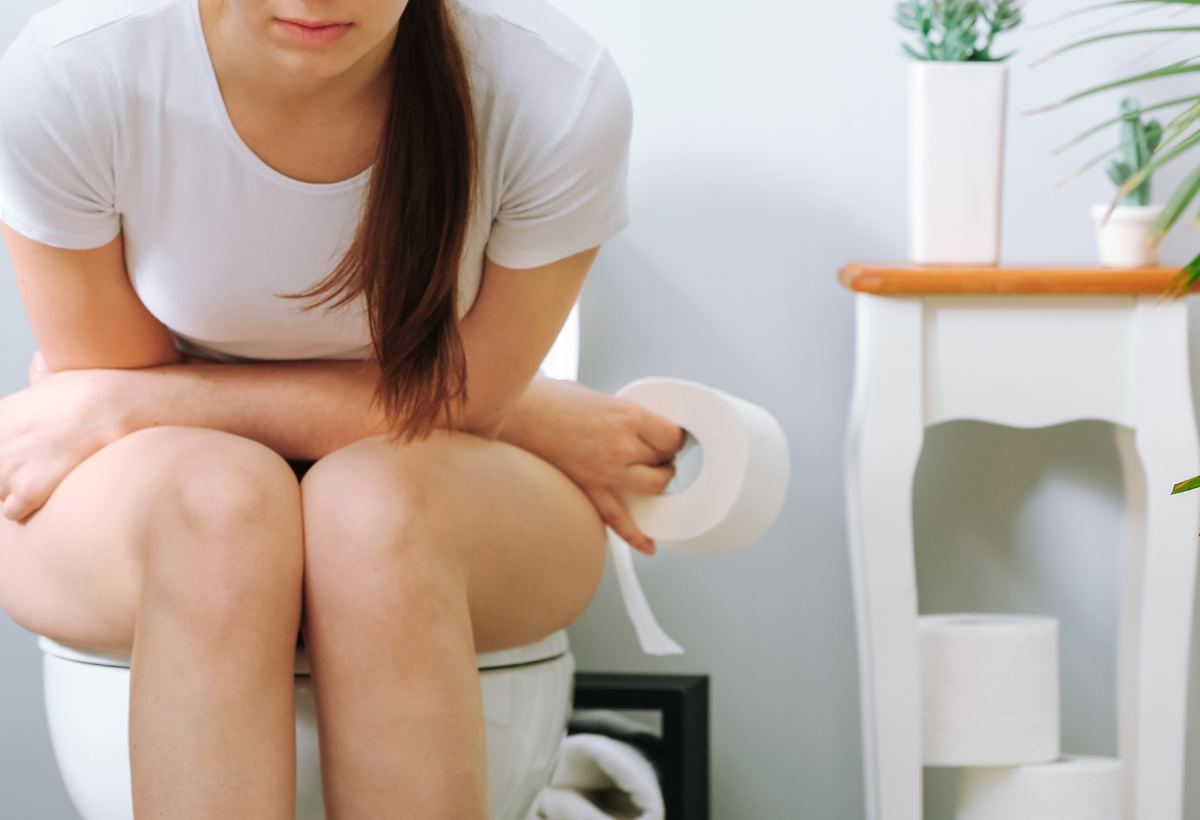Let’s Talk About the Pressure No One Talks About
Constipation is one of those things we brush off as “just annoying,” and prolapse often goes undiagnosed or ignored because it feels too personal or embarrassing to name.
But for many women, especially postpartum or over 40, the two go hand in hand — and not in a friendly way.
It’s like your body is holding tension in all the wrong places, and no one told you how much one issue could quietly feed the other.
You try to “push through” it — literally — only to feel like your insides are working against you.
And they kind of are.
But there's more to this story, and understanding what’s happening is where real relief begins.

How Straining Leads to Sagging — and Why It’s a Vicious Cycle
The pelvic floor is like a sling holding your bladder, uterus, and rectum in place.
When you strain to pass a bowel movement — especially if you’re dealing with chronic constipation — that downward pressure stretches the sling over time.
Eventually, it weakens.
And when it weakens, your organs start to shift out of place.
Pelvic organ prolapse is the result — whether it’s the bladder pushing into the vaginal wall (cystocele), the rectum bulging from behind (rectocele), or the uterus descending downward.
It’s surprisingly common, and even more surprisingly misunderstood.
What many women don’t realize is that prolapse then makes constipation worse.
When the rectum is displaced, stool gets trapped or harder to pass.
You may feel like you’re never fully empty, or that you have to “help” things along manually.
And so the cycle of pressure and straining continues.
“Chronic straining during bowel movements is a key risk factor for pelvic organ prolapse,”
says Dr. Mary Jane Minkin, clinical professor at Yale School of Medicine.
“But prolapse, in turn, contributes to difficult defecation. One feeds the other.”

When Sitting Becomes a Source of Strain
We don’t often think about how sitting affects our pelvic health, but the way we sit can increase intra-abdominal pressure — especially when posture is off.
For women dealing with both constipation and prolapse, this can make symptoms worse, from pressure in the perineum to difficulty fully evacuating the bowels.
 Using a supportive cushion designed to align the pelvis and ease spinal compression can take unnecessary pressure off the pelvic floor.
Using a supportive cushion designed to align the pelvis and ease spinal compression can take unnecessary pressure off the pelvic floor.
Purivon’s Posture Support Cushion encourages natural pelvic alignment, making it easier to relax those tense, overworked muscles — especially helpful during long hours at a desk or while seated on the toilet.

The Tissue Story No One Talks About
It’s not just about muscles — it’s about connective tissue.
The ligaments and fascia holding up your organs rely heavily on collagen.
And with age, menopause, or repeated strain, our collagen levels drop.
That’s when things start to sag, shift, and stretch.

One often overlooked solution is nourishing these tissues from within.
Purivon’s Pelvic Support Collagen Gummies are formulated with collagen and co-factors like vitamin C and zinc to support the integrity of pelvic structures — helping to restore some of the strength lost over time in a way that’s proactive, not reactive.
A 2022 study published in Menopause linked lower collagen levels to increased risk of pelvic floor disorders, reinforcing how important it is to care for connective tissue, not just muscle.

The Bladder Is Caught in the Crossfire
Once prolapse begins, the bladder often gets pulled into the mix.
If it’s being pushed on by a full rectum or displaced uterus, it might not empty properly — leading to more urgency, more nighttime trips to the bathroom, or even unexpected leaks.
Constipation also increases bladder pressure through bloating and trapped gas, making symptoms worse.

Purivon’s Bladder Support Supplement offers gentle, plant-based support for urinary control.
Ingredients like pumpkin seed extract and saw palmetto are known to support bladder tone and reduce urgency.
It’s a thoughtful way to help the body manage multiple overlapping issues without relying solely on reactive measures.

Pressure Relief Isn’t a Luxury — It’s a Daily Need
If there’s one thing the pelvic floor doesn’t love, it’s downward pressure — and when you’re dealing with prolapse and constipation, that pressure can follow you even into sleep.
Many women don’t realize how much their sleeping position contributes to pelvic tension.
Side sleeping, especially without proper support, can cause the hips to twist and the pelvis to misalign — worsening that deep, internal sense of heaviness or discomfort.
Purivon’s Prolapse Pressure Relief Pillow is designed to fit gently between your knees while you sleep.
By keeping the hips aligned and reducing torque on the lower back and pelvis, it encourages proper spinal posture and helps ease pressure on sensitive pelvic structures overnight.
It’s a small shift that supports the body’s natural recovery process — and can make a big difference in how you feel by morning.

Final Thoughts: You’re Not Broken — You’re Under Pressure
It’s easy to feel frustrated when your body isn’t cooperating — when going to the bathroom becomes complicated, when leaks catch you off guard, or when your lower body just feels “off.”
But none of this means you're broken.
It means your body has been carrying a lot, probably for a long time, and it's trying to adapt the best way it can.
Constipation and prolapse are a common, deeply connected struggle — and you are not alone in facing it.
The more we talk about it, the less power shame has.
The more we understand it, the more we can interrupt the cycle.
Relief doesn’t come from pushing harder — it comes from supporting smarter.




Share:
Bladder Leaks & Prolapse Don’t Mean the End of Active Living
The Future of Women’s Pelvic Health: New Innovations to Watch